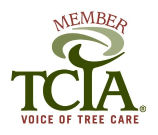Condition Of Acceptable Trees
A High Quality Tree Has:
- Enough sound roots to support healthy growth.
- A single, central trunk or leader.
- A trunk that is free of mechanical wounds and from incorrect pruning.
- A strong form with well-spaced, firmly attached branches.
- Leaves with good color and no obvious insect or disease damage.
- Exposed root flare.


A Low Quality Tree Has:
- Crushed or circling roots in a small root ball or small container.
- A trunk with wounds from mechanical impacts or incorrect pruning.
- A weak form in which multiple stems squeeze against each other.
- Dead branches.
Planting Too Deep
- Root collar excavations revealed that deep planting significantly impacted girdling root development (Arboriculture & Urban Forestry, 2000).
- 93% of professionally planted trees had root collars obscured by soil or mulch, and the extent of the deep planting was seldom less than 2″.
- Buried root collars were present in over 75% of the nursery grown trees examined, and the depth of burial ranged from 3″-12″.
- Deep planting by as little as 6″ had severe consequences for transplant survival.
What Is Root Flare?
The root flare is the part of the tree that widens at the base and transitions into the root system.

Why Expose It?
Having the root flare covered can make the tree more susceptible to infection and disease, as well as root grinding.

Consequences Of No Root Flare
- Deep planting makes trees more prone to transplant failure.
- Reduced oxygen availability to the roots.
- Reduced water infiltration.
- Reduced access to shallow nutrient pools.
- Girdling root development.
- Increased fungal and insect infestations.
Girdling Roots
What Does Root Girdling Do?
- Girdled roots can restrict water and nutrient uptake, slowly killing the tree.
- Girdling roots are caused by nursery transplanting practices and soil obstructions.
- Roots grown in containers frequently begin circling if in the container too long.


Our Recommendation
- Locate the root flare and remove excess soil to expose the roots, as well as across the top of the entire root ball.
- Prune or straighten out all circling roots to combat root girdling.
- A girdling root must be removed in a manner that will minimize injury to the trunk cambium beneath the root.
Ready For A Quote?
Click the button below to contact us and get started taking care of your trees.










